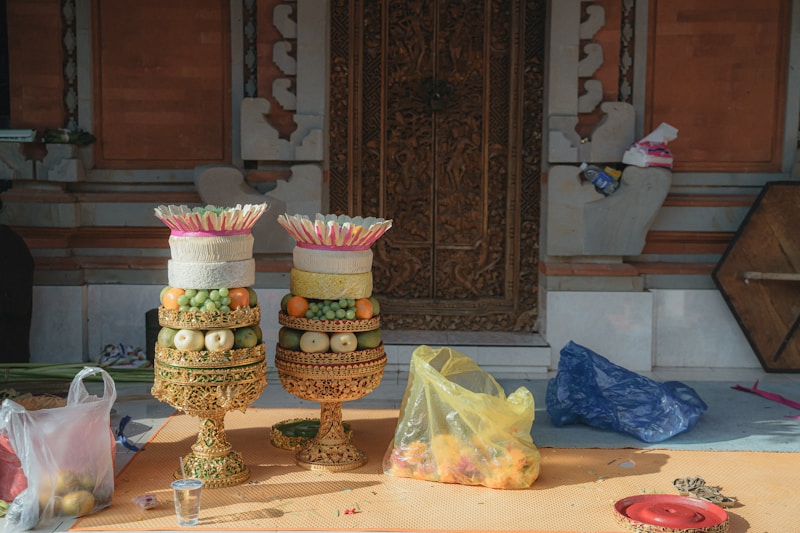Exploring Holiday-Inspired Ceremonial Elements: A Guide to Celebratory Traditions
Understanding Holiday-Inspired Ceremonial Elements
Throughout the world, cultures celebrate various holidays, each characterized by unique ceremonial elements that reflect their values, histories, and joys. These traditions, infused with holiday spirit, provide an opportunity for communities to come together and honor their heritage. In this article, we will explore the concept of holiday-inspired ceremonial elements, emphasizing their significance, various forms, and their global manifestations.
What Are Holiday-Inspired Ceremonial Elements?
Holiday-inspired ceremonial elements refer to the distinctive practices, symbols, and rituals associated with the celebration of specific holidays. These elements can be categorized into various forms, including:
- Rituals: Activities performed in a prescribed order for spiritual or cultural significance.
- Symbols: Objects or images that hold particular meaning related to the holiday.
- Food and Drink: Special dishes and beverages that are traditionally enjoyed during celebrations.
- Decorations: Decorative items that enhance the festive atmosphere.
The Significance of Ceremonial Elements
Ceremonial elements play a crucial role in expressing cultural identity and communal bonds. They serve as a medium for storytelling and the passing down of traditions from one generation to another. Engaging in rituals and celebrations fosters a sense of belonging and continuity, enriching the participants’ connection to their roots.
Examples of Holiday-Inspired Ceremonial Elements Around the World
Different cultures have unique ways of celebrating holidays, and this diversity is reflected in their ceremonial elements. Below are some prominent examples:
| Holiday | Ceremonial Elements | Region |
| Christmas | Decorating Christmas trees, exchanging gifts, singing carols | Global |
| Diwali | Lighting oil lamps, exchanging sweets, fireworks | India |
| Hanukkah | Lighting the menorah, playing dreidel, eating latkes | Jewish communities worldwide |
| Chinese New Year | Dragon dances, red envelope gifting, family feasts | China and global Chinese communities |
Holiday-Inspired Ceremonial Elements in Practice
In practice, holiday-inspired ceremonial elements vary widely between cultures. For instance, during Christmas, it is customary to decorate homes with lights and ornaments, symbolizing the joy and warmth of the season. On Diwali, the festival of lights, people illuminate their homes with oil lamps to signify the victory of light over darkness.
In Hanukkah, the lighting of the menorah each night represents a miraculous event in Jewish history, wherein one day’s worth of oil lasted for eight days. Celebrating Chinese New Year includes activities such as setting off firecrackers to ward off evil spirits and enjoying dumplings that symbolize wealth.
Creating Your Own Holiday-Inspired Ceremonial Elements
You don’t need to have deep cultural ties to create your own holiday-inspired ceremonial elements. Here are some ideas:
- Personalized Decor: Design custom decorations that reflect your values and aesthetics.
- New Traditions: Start new family traditions that could involve special meals or themed parties.
- Rituals: Create simple rituals that your family can practice during the holidays, such as a gratitude circle.
The Impact of Globalization on Ceremonial Elements
As the world becomes increasingly interconnected, traditional holiday practices are often blended, resulting in new forms of celebrations. Globalization can lead to a richer, more diverse understanding of these ceremonial elements, but it can also dilute the authenticity of certain cultural traditions. It’s crucial to approach these blended celebrations with respect, honor their origins, and protect the traditional practices that are at risk of being lost.

Common Questions About Holiday-Inspired Ceremonial Elements
As you delve into the world of holiday celebrations and their ceremonial components, you might have several questions. Below are some commonly asked questions along with their answers:
- What is the purpose of holiday-inspired ceremonial elements?
Ceremonial elements serve to strengthen community bonds, express cultural heritage, and provide a sense of belonging. - How can I incorporate my culture’s traditions into modern celebrations?
You can mix traditional practices with contemporary elements, creating a unique celebration that honors your heritage while embracing the present. - Why are symbols important in holiday celebrations?
Symbols often encapsulate complex ideas and values, making them an effective way to convey cultural significance in a tangible form.
Conclusion: Embracing Holiday-Inspired Ceremonial Elements
Holiday-inspired ceremonial elements enrich our lives by connecting us to our cultural roots and fostering a sense of community. Whether through the joyous rituals of Christmas, the illuminating lights of Diwali, or the familial gatherings of Chinese New Year, these elements serve as vital expressions of identity and belonging. As we celebrate diverse cultures and create new traditions, let us remember to respect and honor the origins of these practices. Engaging with holiday-inspired ceremonial elements is not just a way to celebrate; it is an opportunity to weave a richer tapestry of multicultural understanding and appreciation, building a world that celebrates its diversity.
As you plan your next holiday celebration, consider the elements that resonate most with you and your loved ones, and take the opportunity to create lasting memories that honor both tradition and innovation.